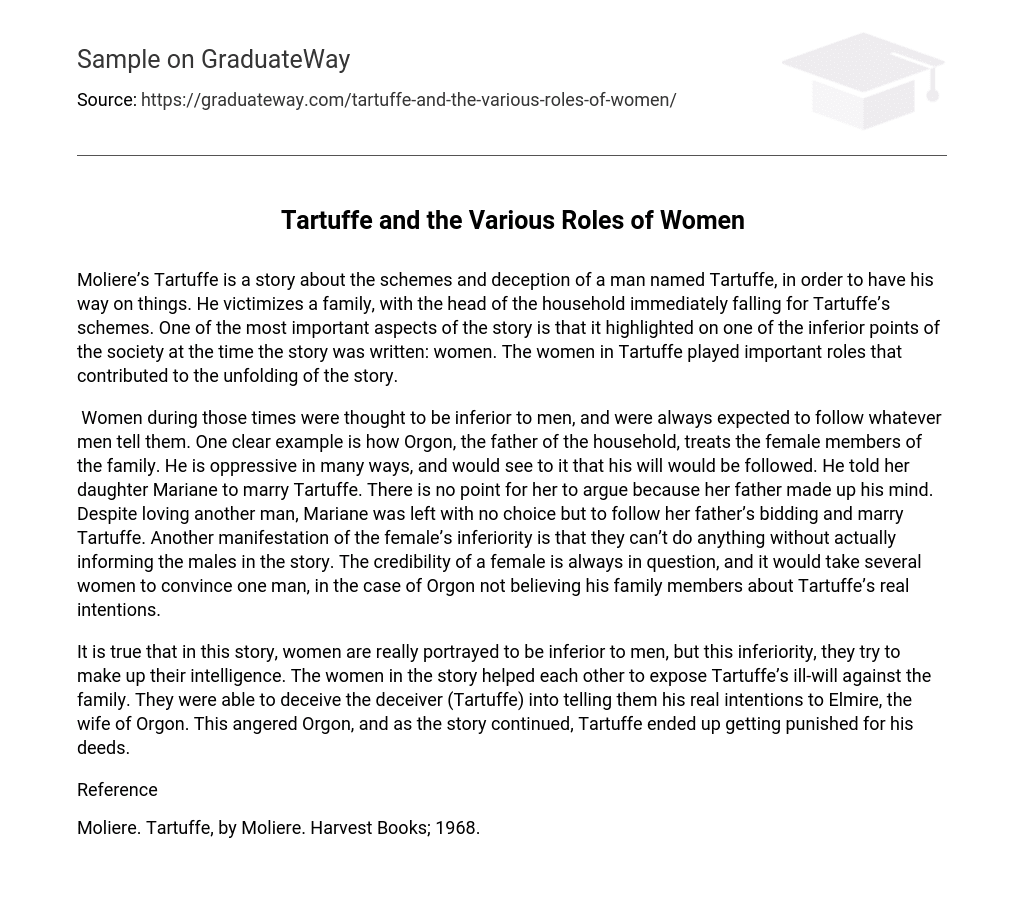Moliere’s Tartuffe is a story about the schemes and deception of a man named Tartuffe, in order to have his way on things. He victimizes a family, with the head of the household immediately falling for Tartuffe’s schemes. One of the most important aspects of the story is that it highlighted on one of the inferior points of the society at the time the story was written: women. The women in Tartuffe played important roles that contributed to the unfolding of the story.
Women during those times were thought to be inferior to men, and were always expected to follow whatever men tell them. One clear example is how Orgon, the father of the household, treats the female members of the family. He is oppressive in many ways, and would see to it that his will would be followed. He told her daughter Mariane to marry Tartuffe. There is no point for her to argue because her father made up his mind. Despite loving another man, Mariane was left with no choice but to follow her father’s bidding and marry Tartuffe. Another manifestation of the female’s inferiority is that they can’t do anything without actually informing the males in the story. The credibility of a female is always in question, and it would take several women to convince one man, in the case of Orgon not believing his family members about Tartuffe’s real intentions.
It is true that in this story, women are really portrayed to be inferior to men, but this inferiority, they try to make up their intelligence. The women in the story helped each other to expose Tartuffe’s ill-will against the family. They were able to deceive the deceiver (Tartuffe) into telling them his real intentions to Elmire, the wife of Orgon. This angered Orgon, and as the story continued, Tartuffe ended up getting punished for his deeds.
Reference
Moliere. Tartuffe, by Moliere. Harvest Books; 1968.





